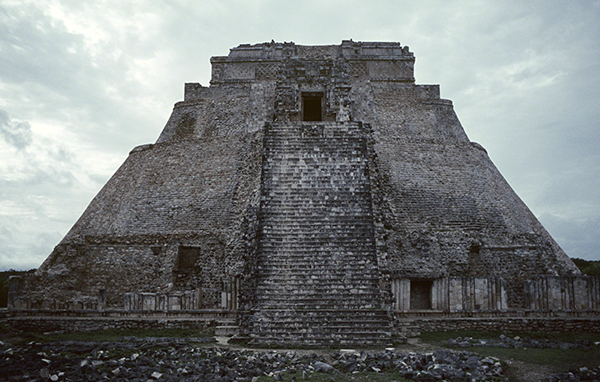Rethinking Classicism: Maya
As a Westerner (and art historian my entire adult life), I have always felt extremely weary of the word “classicism.” One reason I am weary of the word is that it is used as a blanket term in Western art and it has a certain whiff of superiority when it is used. Studying the art of cultures from as many corners of this planet as I can over the years, I have come to despise the term and its inherent implications that the art of ancient Greece and Hellenized Roman art were the “peak of aesthetic refinement.” That is a pretty stale viewpoint, particularly when one has to yawn their way through a gallery of ancient Greek or Roman sculpture.
Let’s examine the word: the definition of “classicism” is (from the Oxford Dictionary), 1). the following of ancient Greek or Roman principles and style in art and literature, generally associated with harmony, restraint, and adherence to recognized standards of form and craftsmanship; and 2). the following of traditional and long-established theories or styles.
I can think of some other terms that reflect these ideas: iconic, epitome, apogee.
We all hear the term “classic car” or “that movie is a classic.” I think rather than always harking back to the restrictive “perfection” of ancient Greek and Roman aesthetics, we should see classicism in all cultures of the world. I am sure every culture has a period that it perceives as the “peak of aesthetic refinement.” The same goes for following “traditional and long-established theories or styles.” Over the next few days, let’s view artworks that fit my interpretation of “classicism.”
 |
| Maya, Pyramid of the Magician, Uxmal, Mexico, ca. 569 CE, last addition 900–1000 CE. Image © 2020 Davis Art Images. (8S-11424) |
Speaking of the word “classic,” Mesoamerican chronology is organized around the term. The Maya culture in Mexico developed during the Pre-Classic Period (ca. 2000s BCE–250 CE), flourished during the Classic Period (250 CE–900 CE), and experienced a brief resurgence in the Late Classic Period (900–1500s CE). I certainly view the numerous developments of the stepped, platform pyramid temple/shrine by Mexican cultures (including the Mayans) as a classical achievement of the many cultures that flourished in ancient Mexico.
By the 200s CE, the Mayan lands included areas in present-day El Salvador, Honduras, Guatemala, Belize, and Mexico. One of the greatest civilizations of antiquity, the Mayans developed a sophisticated society that included development of a very accurate calendar, a complex hieroglyphic script, sophisticated architecture and city planning, water conservation and irrigation techniques, a system of mathematics, and an accurate system of astrometric predictions.
Uxmal was a Mayan-controlled city on the Yucatan in the Puuc Hills. It was firmly under a Mayan dynasty and constructed during the Late Classic period, the most flourishing period for the city. The dynasty may have been related to the ruling families of other Puuc cities such as Kabáh, Sayil, and Labná because there are similarities in architectural styles.
The Temple (Pyramid) of the Magician (or, Temple I) is the tallest pyramid at Uxmal. It is an unusual pyramid in Mayan architecture with five superimpositions, comprising temples built at various times during the Late Classic period. It got its name from a Mayan myth about the building of a pyramid by a magical child born of an egg by a witch. The design is similar to the pyramid at Edzná near Campeche.
The west and east façade stairways on the Temple of the Magician are the steepest of all Mayan pyramids at an angle of 60 degrees. The façade of the temple contains minimal decoration, such as mosaic stonework or sculpture. The risers on the sides of the staircase are monumental in size and a corbeled arch creates a passageway on the platform of Temple I (the lowest level, only partially visible here on the north portion of the west façade).
Carbon dating of Temple I reveals an early construction date of ca. 569 CE. The corbeled arch was favored in Mayan architecture throughout Central America. The corbeled arch is constructed by placing each level of stones (the voussoirs, as it were), closer and closer together until they join at the peak of the arch.


Comments